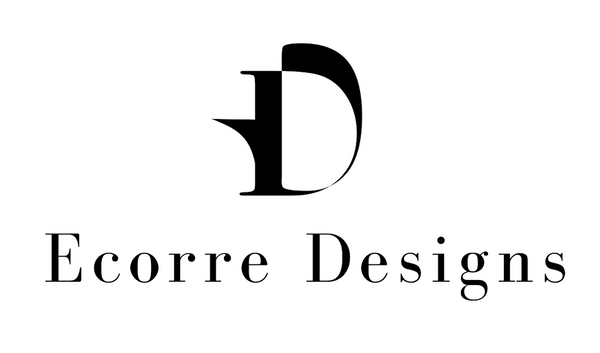The world of ornamental design is ever-evolving, blending traditional aesthetics with modern innovation to create spaces that are both beautiful and functional. As we approach 2025, several trends are emerging that promise to redefine our environments with elegance and creativity. Here are five ornamental design trends to watch for in the coming year.
That’s why here at Hartland Designs we would like to offer some upcoming trends and some hopefully insightful information to compliment each section.
1. Biophilic Design
Biophilic design is an approach that seeks to connect people more closely to nature. This trend has been growing steadily over the past few years, and by 2025, it is expected to become a central theme in ornamental design. The focus is on integrating natural elements into indoor spaces, creating environments that promote well-being and productivity.
Key elements of biophilic design include:
- Living Walls and Green Roofs: Incorporating plants into vertical surfaces to create lush, green walls or roofs that are not only aesthetically pleasing but also improve air quality.
- Natural Materials: Using wood, stone, and other natural materials to bring a sense of the outdoors inside.
- Water Features: Adding fountains, aquariums, or other water elements to create a calming atmosphere - although we’re aware this can be less accessible for some.
- Natural Light: Maximizing the use of natural light through large windows, skylights, and open floor plans, or even mirrors to give the perception of a more open space.
2. Maximalism
In stark contrast to the minimalist trend that has dominated the past decade, maximalism embraces bold colors, rich textures, and intricate patterns. This trend is all about self-expression and creating spaces that tell a story.
Characteristics of maximalism include:
- Vibrant Colors: Using a wide range of colors to create dynamic and engaging spaces.
- Layered Textures: Combining different materials and finishes, such as velvet, silk, and metallics, to add depth and interest.
- Eclectic Decor: Mixing and matching furniture and accessories from different eras and styles to create a unique and personalized look.
- Pattern Play: Incorporating a variety of patterns, from florals to geometrics, to add visual complexity - depending on how far you would like to take this of course.
3. Sustainable and Recycled Materials
As environmental awareness continues to grow, sustainable design is becoming a major trend. Designers are increasingly using recycled and eco-friendly materials to create beautiful, sustainable spaces.
Key aspects of this trend include:
- Reclaimed Wood: Using wood from old buildings, barns, or other sources to create furniture and decor that has a history as well as reclaimed wooden sculptures.
- Recycled Metals and Glass: Incorporating materials that have been repurposed from other uses, reducing waste and conserving resources.
- Sustainable Fabrics: Choosing textiles made from natural fibers or recycled materials.
- Energy Efficiency: Designing spaces that reduce energy consumption through efficient lighting, insulation, and climate control.
4. Art Deco Revival
The glamour and elegance of the Art Deco movement are making a comeback in 2025. This trend combines the luxurious materials and bold geometric patterns of the 1920s and 1930s with modern sensibilities.
Elements of the Art Deco revival include:
- Geometric Patterns: Using bold, symmetrical designs in flooring, wallpaper, and textiles.
- Luxurious Materials: Incorporating marble, brass, and other high-end materials to create a sense of opulence.
- Streamlined Furniture: Choosing furniture with clean lines and sleek finishes that reflect the Art Deco aesthetic.
- Glamorous Lighting: Installing statement lighting fixtures, such as chandeliers and sconces, that add a touch of vintage glamour.
5. Technological Integration
As technology continues to advance, its integration into ornamental design is becoming more seamless and sophisticated. Smart homes are not just about convenience; they are also about creating spaces that are beautiful and functional.
Features of technological integration include:
- Smart Lighting: Using lighting systems that can be controlled remotely or set to adjust automatically based on the time of day, which in turn affect the ambiance of the room and therefore the ornaments featured in the space.
- Home Automation: Integrating systems that control heating, cooling, security, and entertainment, all through a single interface.
- Interactive Art: Incorporating digital art installations that can change and adapt based on user preferences or environmental factors.
- Virtual Reality: Using VR to design and experience spaces before they are physically created, allowing for greater precision and creativity in the design process.
Conclusion
The ornamental design trends of 2025 are a fascinating blend of nature, sustainability and stepping away from the somewhat obsession with the designer, minimalist past. The main thing to remember is the focus on ornaments which intrigue you, fascinate you, tell a story of how and why you came to have it in your home. Here at Hartland Designs, we suggest you buy what you fundamentally love and are attracted to, to utilize trends as a guide however, always go with your instinct on what will fit as a piece of decor, design or ornament in your home.
We hope you found this read insightful and maybe helped you think a little differently when decorating and creating your new space.

